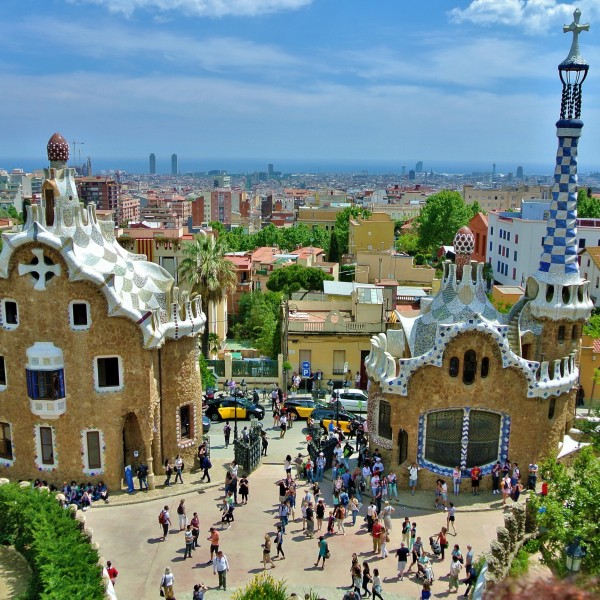Madrid, Thyssen-Bornemisza Museum | Level Two
The Museo Thyssen-Bornemisza in Madrid contains one of the world’s foremost and distinguished private art collections
Acquired over two generations, the collection is directly linked to the names of Heinrich Thyssen-Bornemisza (1975-1947) and Hans Heinrich Thyssen-Bornemisza (1921-2002). The Carmen Thyssen-Bornemisza Collection, which is also a permanent collection, contains more than 200 paintings from the 17th to the 20th century.
Carmen Thyssen-Bornemisza began collecting works of art in 1987. Carmen, the wife of Baron Hans Heinrich Thyssen-Bornemisza, had a major contribution to the creation of the museum. Her collection is impressive and contains some of the most beautiful paintings made by great artists such as Courbet, Renoir, Gauguin, Van Gogh and Picasso.
The permanent collection is distributed over 3 floors with a suggested tour beginning with the Old Masters on Level 2. The visit starts with the Italian Primitives and continues with examples of Renaissance and Baroque art. The route includes two monographic rooms, one devoted to Renaissance portaiture(the genre best represented in the museum), and the other to urban views dating from the 18th century.
The Annunciation Diptych by Jan van Eyck (1440)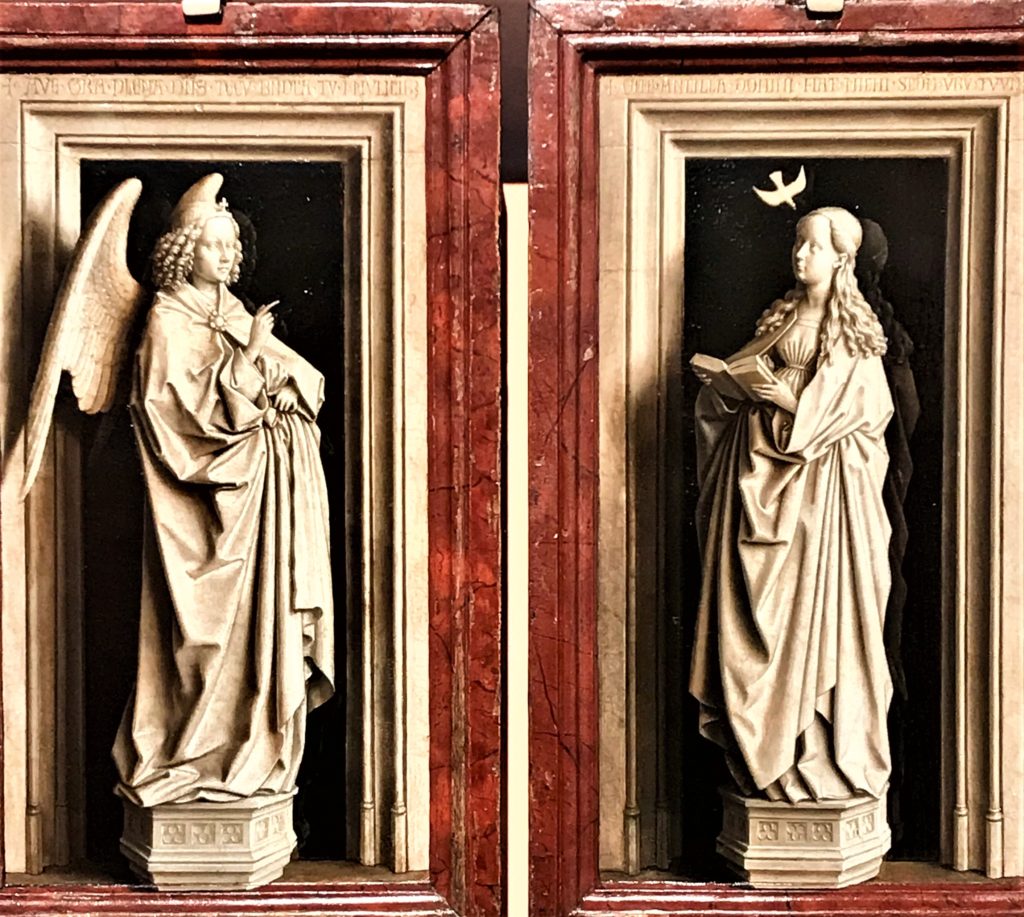
In this extraordinary painting, Jan van Eyck depicts the image through the application of black and white paint, creating the illusion of a sculptural group. This painting is also an outstanding example of ‘grisaille’ painting. A ‘grisaille’ is a monochrome painting or under-painting usually created in shades of grey or of another neutral grayish color.
Portrait of Giovanna degli Albizzi Tornabuoni by Domenico Ghirlandaio (1448)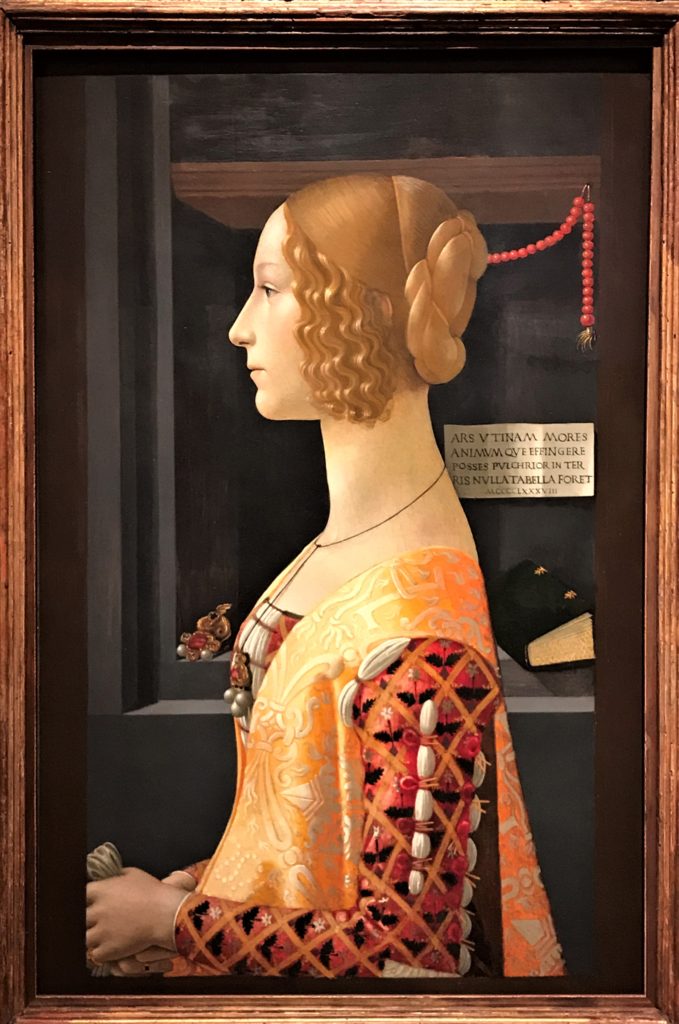
This superb painting made by the Italian Renaissance painter Domenico Ghirlandaio dates from the 15th century. Giovanna belonged to an important Florentine family and married Lorenzo Tornabuoni. This painting of her represents a noble woman depicted in a precious garment. It’s also a perfect Florentine portraiture example because in that period of time body proportions were idealised.
Cosimo de Medici in Armour by Bronzino (1545)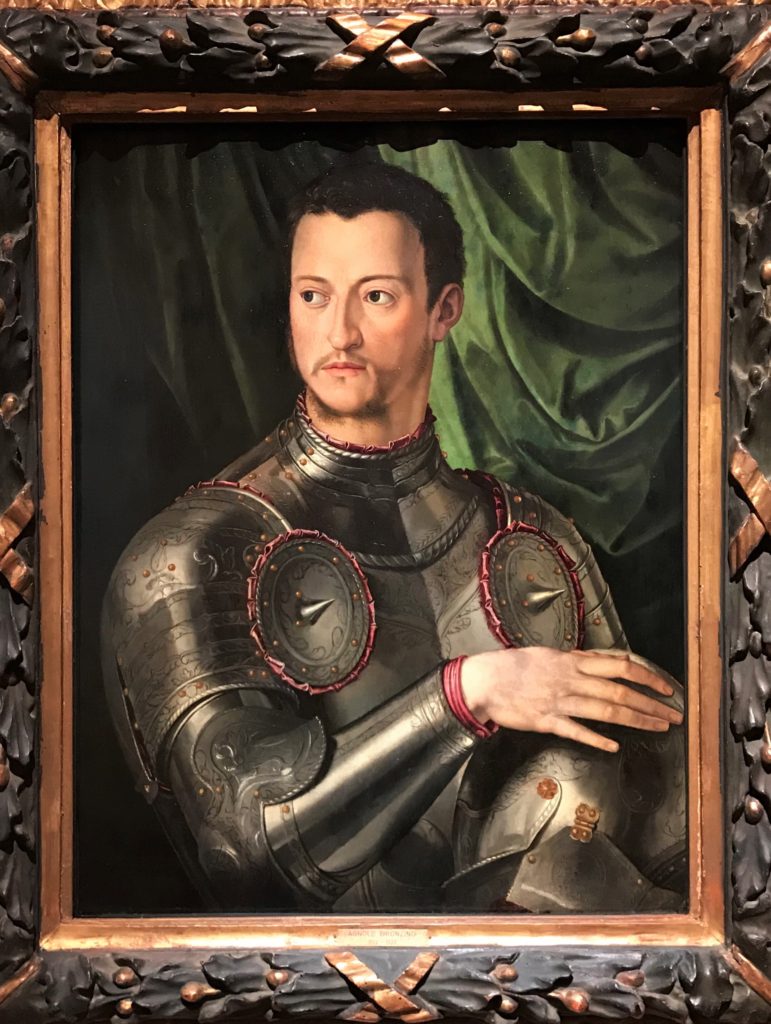
This portrait of Cosimo de Medici made by Bronzino is a version of the original painting which is now in the Uffizi Gallery in Florence. The Italian artist Bronzino was commissioned to make a series of portraits for the Duke de Medici. This image of Cosimo, depicted half-length and dressed in armor, was used as an official image. The other replicas of this image were probably used for propaganda. The painting in Thyssen-Bornemisza museum is slightly different from the original in the Uffizi. While the original has a black background, in this one the painter used green pain for the background, creating a beautiful contrast.
Christ with the Cross by El Greco (1587)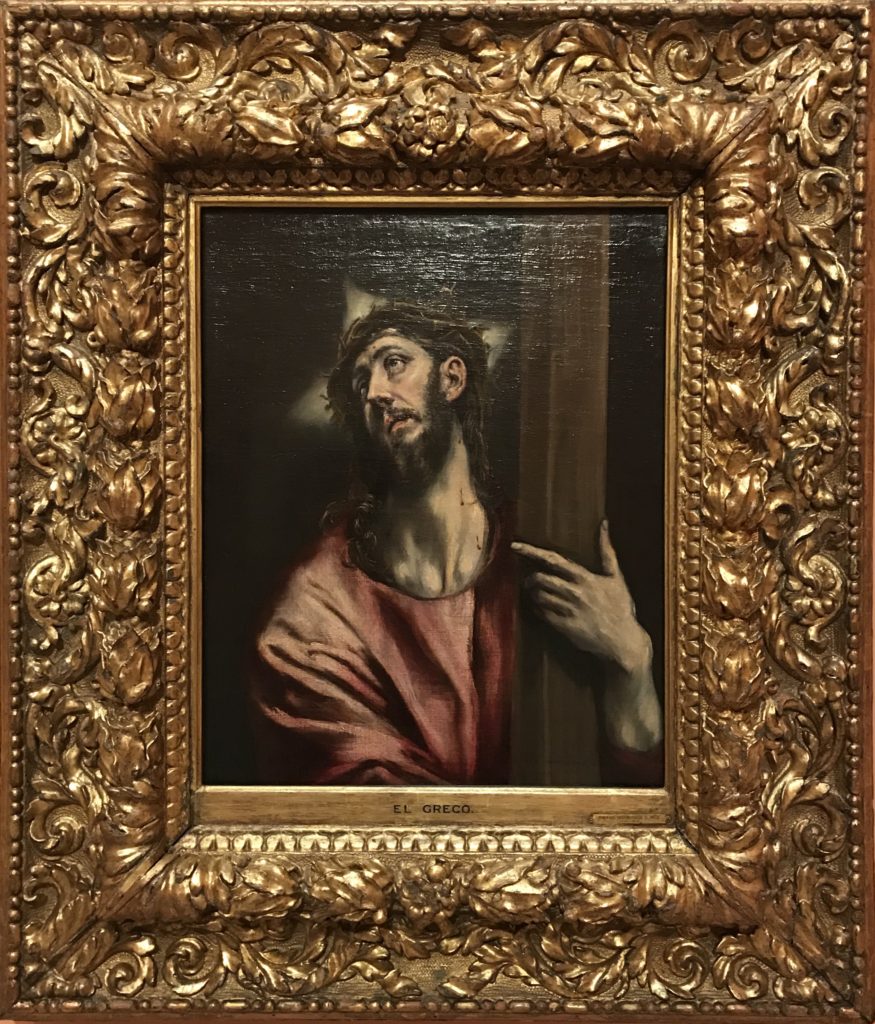
The Christ El Greco depicted here is a representation of the physical suffering. This isolated image of Christ derives from the narrative series of Christ’s Passions. There is no doubt this painting is exceptionally beautiful. The more you look at it, the more you feel the intense suffering feeling.
The Piazza San Marco in Venice by Canaletto (1723-1724)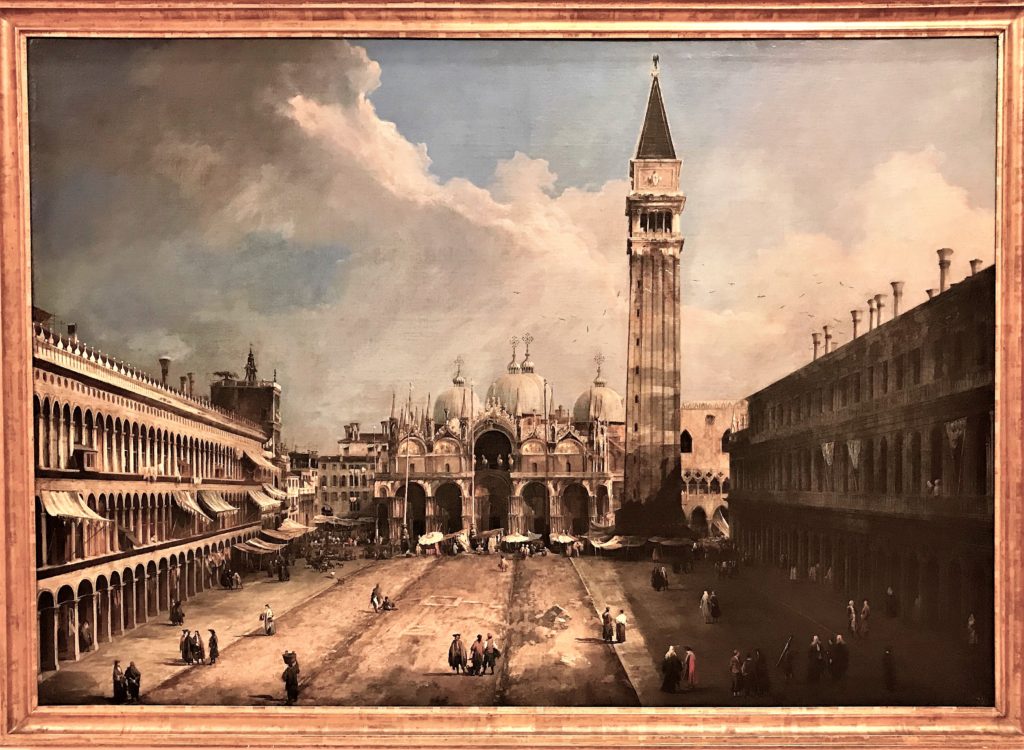
This painting dating from 1723 belongs to the great Italian artist Canaletto. As the leading painter of city views, Canaletto represented the famous Piazza San Marco so beautifully, from a high view-point, with Saint Mark’s Basilica standing in the middle.
Self-Portrait Wearing a Hat and Two Chains by Rembrandt (1642-1643)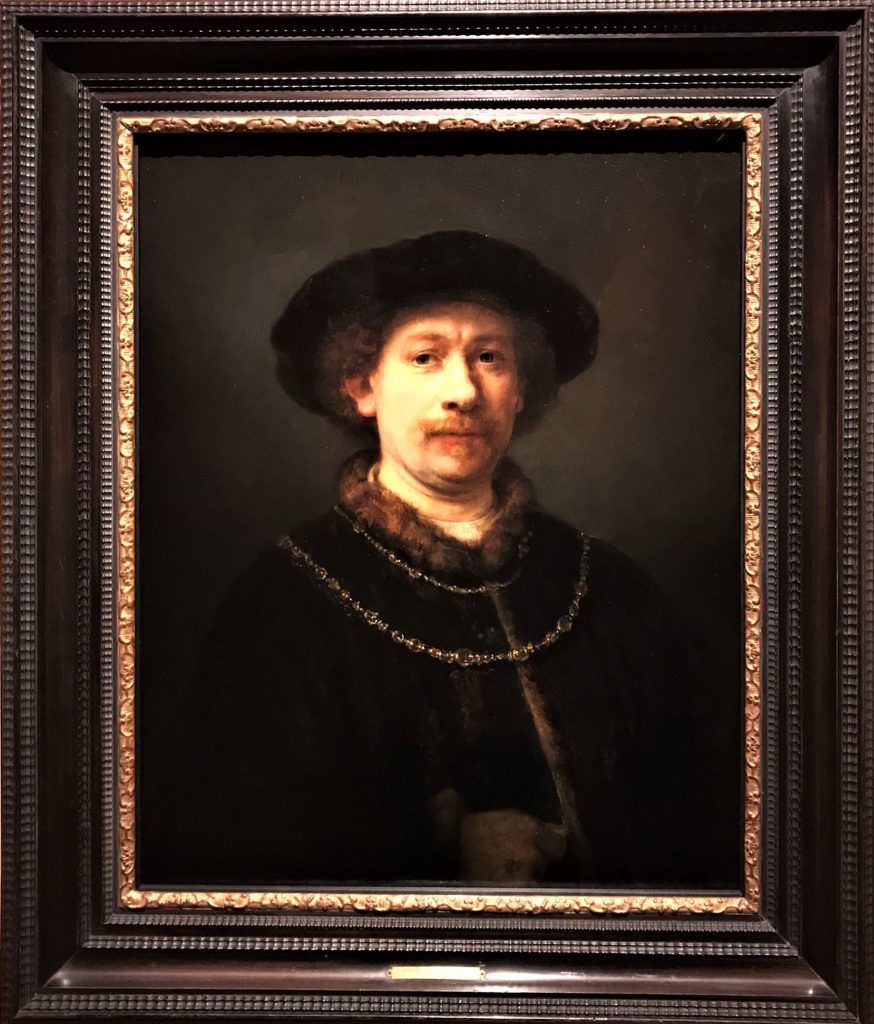
Although the great Dutch painter Rembrandt made over 90 self-portraits, this one is an accurate representation of the artist’s feelings. It is obvious that this particular self-portrait looks like a mirror of his soul. Rembrandt is well-known for using ‘chiarobscuro’, the technique that helped him express his moods and especially his state of mind.
Diana Bathing by Camille Corot (1869-1870)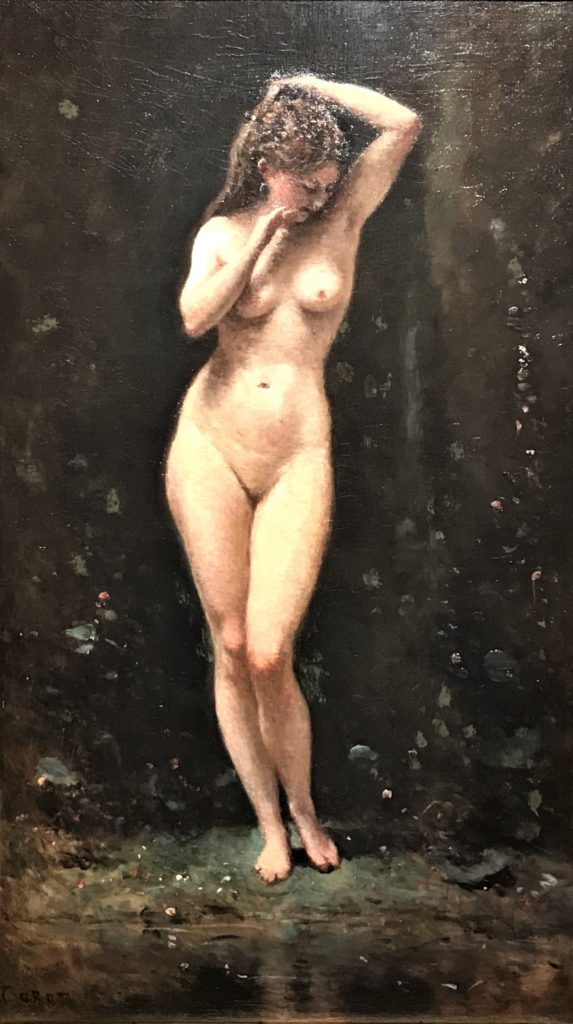
Although Camille Corot is known for his landscape paintings, there are some women nudes paintings which can be admired, most of them, in private collections. This particular one, ‘Diana bathing’, is one of the most beautiful paintings from the Carmen Thyssen-Bornemisza Collection.
The Fisherman’s Children by Gustave Courbet (1867)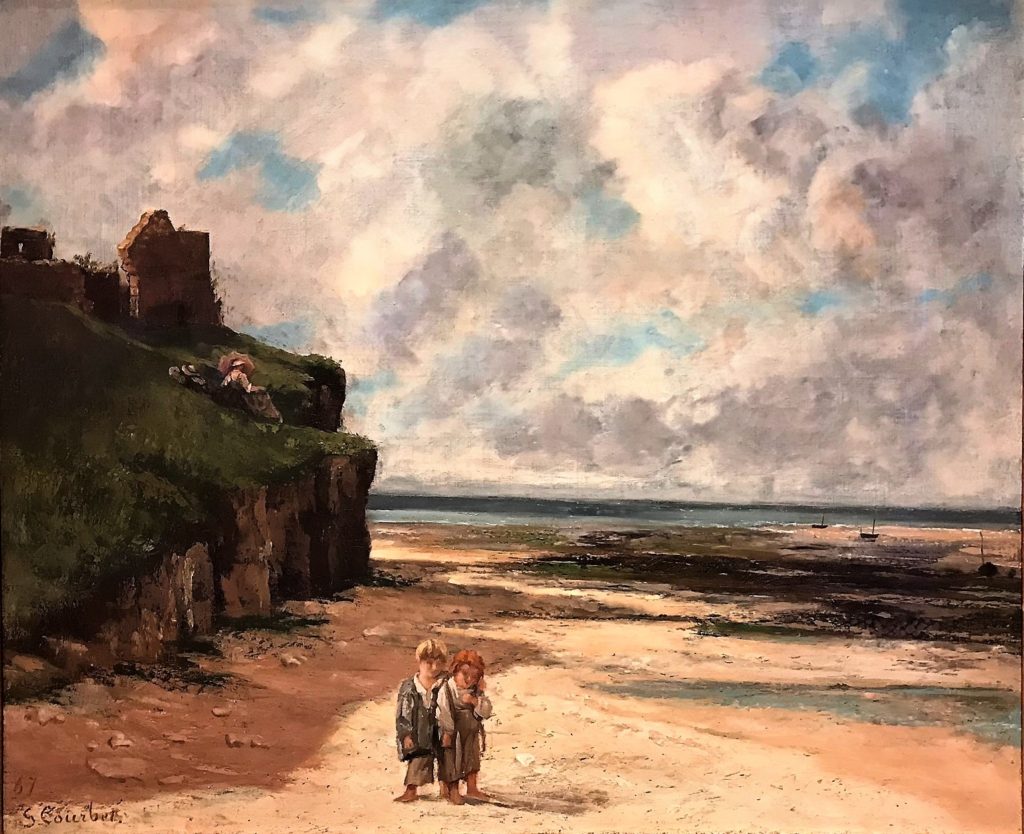
This small canvas is a representation of nature and life, so beautifully coupled by Gustave Courbet. The artist wished to make genre painting and history painting one and the same; this was at the core of his aesthetic demands from the 1848 Revolution on. Although it is unusual to combine social issues and landscape painting, Courbet wanted to highlight that politics has to face everyday life.
Cornfield by Pierre-Auguste Renoir (1879)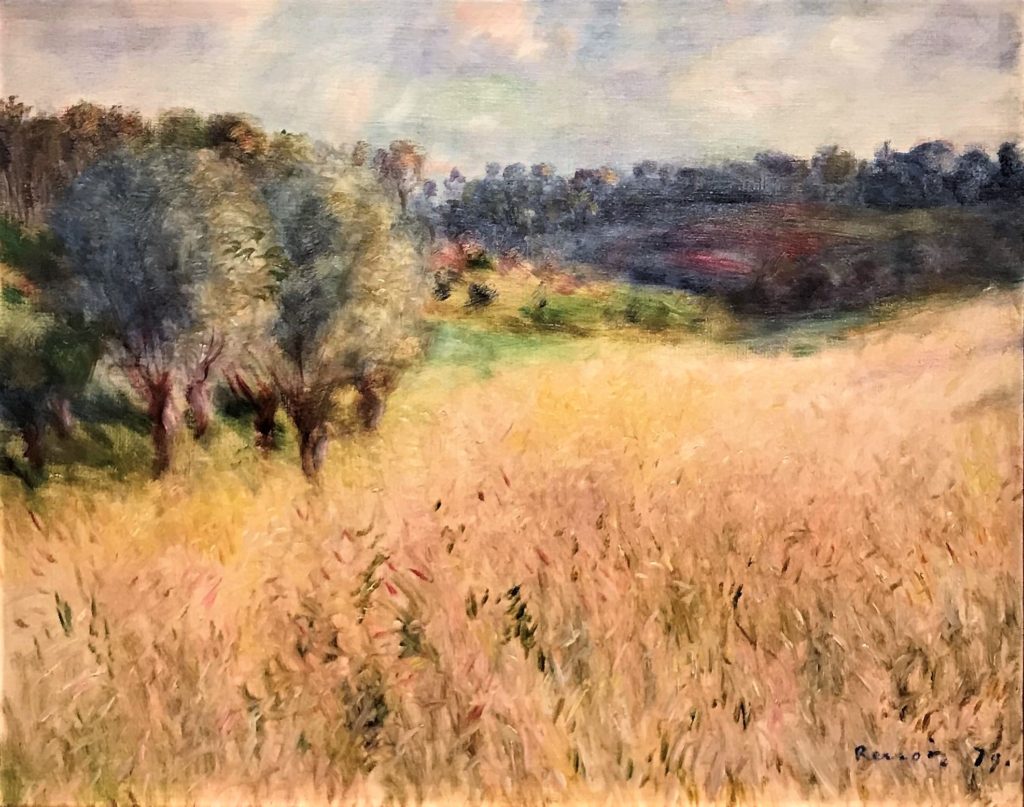
At the time the ‘Cornfield’ was painted, Renoir was working very closely to Claude Monet. They spent much time painting outdoors, capturing the fleeting effects of the sunlight as it scatters across a landscape. With the ‘rainbow palette’, Renoir painted over 6,000 canvas of women, children, flowers and fields.
Race Horses in a Landscape by Edgar Degas (1894)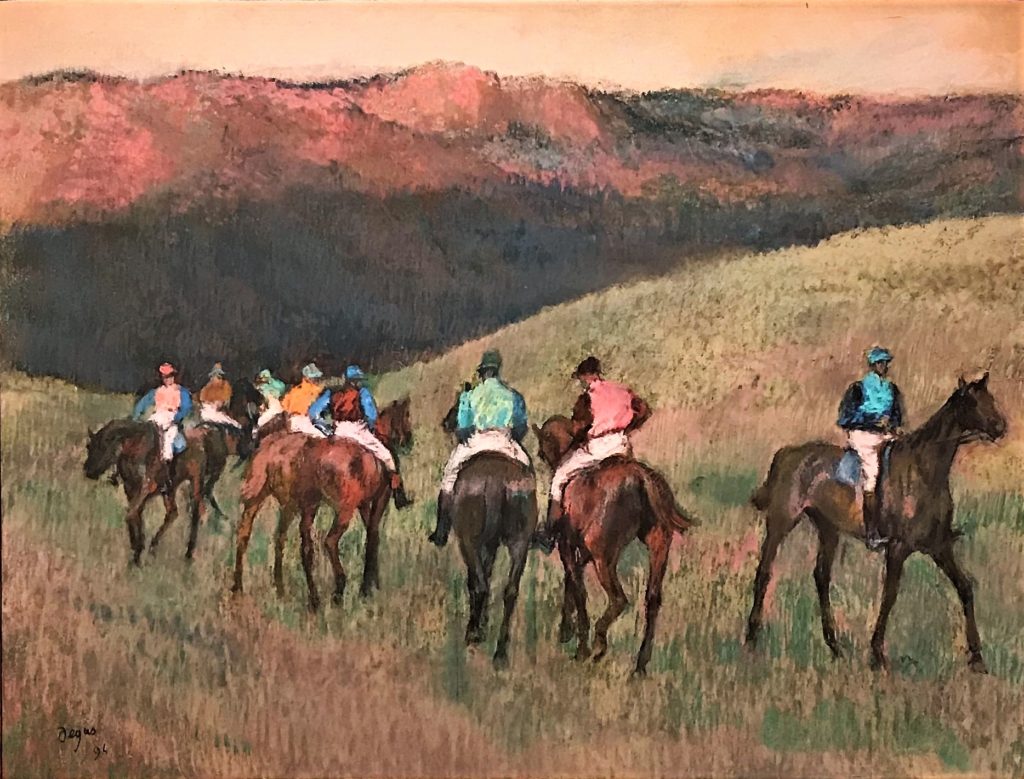
Edgar Degas, like his colleague Renoir, used to sign the works he completed. This beautiful pastel was purchased immediately from the artist by his dealer Durand-Ruel and then sold to Louisine Havemeyer, the great American collector who had formed one of the great Degas collections in history.
Race Horses in a Landscape by Edgar Degas (1894)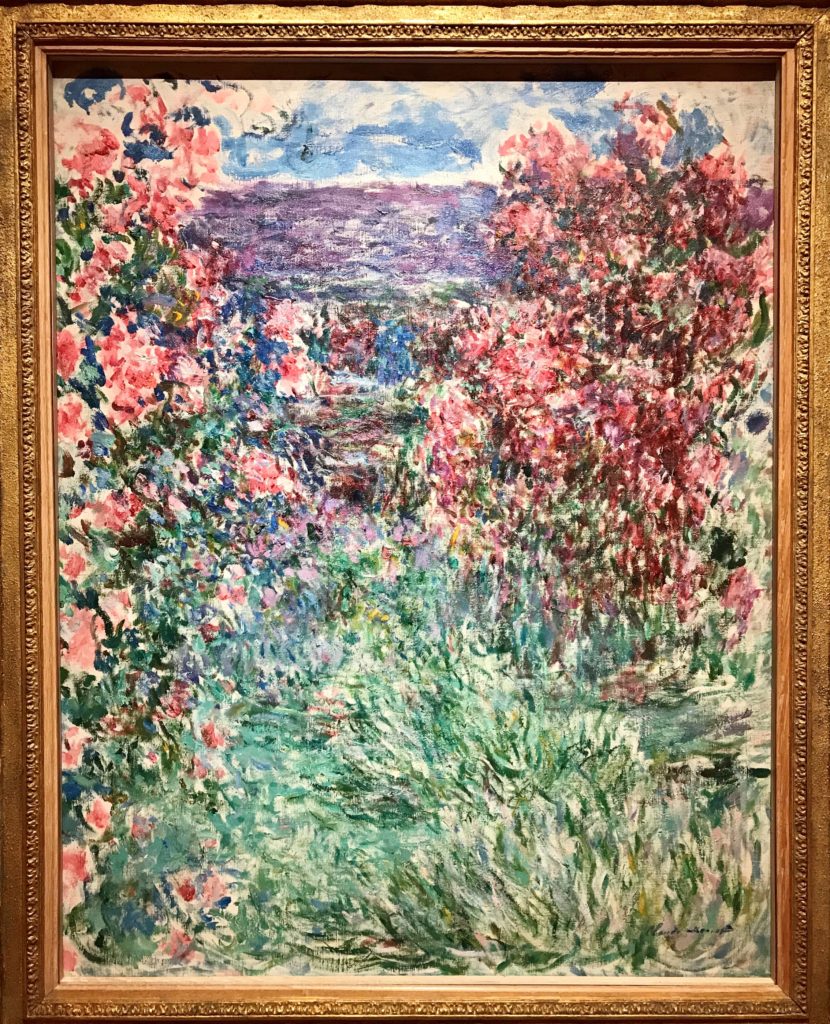
Another extraordinary painting is definitely Monet’s work of art which depicts the front of the artist’s house in Giverny. This painting was executed one year before Monet died, in 1926. On the last years of his life, Monet painted Water Lilies – a large series of approximately 250 oil canvas.



